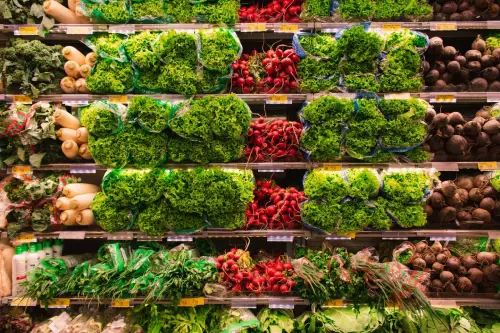

International Trade In Vegetables
Introduction: International trade in vegetables plays a pivotal role in shaping the economies of countries worldwide. This global exchange of vegetable products contributes significantly to a nation’s economic growth and stability. It allows countries to leverage their comparative advantages in agricultural production, leading to increased efficiency and competitiveness in the global market. Additionally, international vegetable trade fosters cooperation and partnerships among nations, stimulating economic development and creating employment opportunities. However, it is essential for countries to strike a balance between importing and exporting vegetables to ensure food security, maintain local agricultural industries, and manage environmental sustainability challenges associated with long-distance trade. Consequently, the dynamics of international vegetable trade have a profound impact on the economic well-being of nations and can influence their overall prosperity and development.
The most commonly vegetables, such as broccoli, cauliflower, red and white cabbage, white onions, bell peppers, cucumbers, and eggplants, are traded as valuable and diverse products.
This Vegetables are popular products used as essential ingredients in various dishes and salads worldwide. Due to high demand, nutritional value, quality, shelf life, suitable transport characteristics, and the expansion of target markets, they have become attractive options for both exports and imports.
Some of the advantages of these vegetables and the reasons that make them popular include their high nutritional value. They are rich in essential nutrients such as vitamins, minerals, and fiber. Consuming a variety of these products contributes to a healthy diet, and through their export and import, these nutritional benefits can be extended to other countries as well.
Furthermore, some of these vegetables can be produced throughout different seasons of the year. This characteristic allows for continuous production and supply to the market. For example, broccoli is produced in both spring and fall seasons, making it available for distribution during two different times of the year.
Imports of Vegetables
The import of vegetables into countries depends on demand and domestic production capacity. Some countries require vegetable imports due to climatic and economic conditions. Factors influencing vegetable imports include:
- Consumer Demand: Demand for vegetables typically fluctuates throughout different seasons of the year. For example, during the winter season, there is less need for domestic vegetables, leading to higher imports.
- Product Diversity: The variety of vegetables a country imports depends on consumer demand and preferences. For instance, a country may need to import vegetables like eggplants or bell peppers.
- Production Constraints: Climatic conditions and natural resources in each country can limit domestic vegetable production, necessitating imports.


Exports of Vegetables
Countries with surplus vegetable production export these products to international markets. Vegetable exports depend on the following factors:
- Product Quality: The quality of vegetables is one of the most critical factors influencing the purchasing decisions of foreign customers. Vegetables must be fresh and free from defects to meet customer expectations.
- Price Competitiveness: The prices of vegetable products must be competitive in order to compete with similar products in foreign markets.
- Storage and Transportation Capability: Maintaining the freshness of vegetables during storage and transportation is crucial. Refrigeration systems and proper transportation methods are vital to preserving the quality of vegetables throughout the supply chain.

Methods of Vegetable Transportation:
Transporting vegetables for export and import involves several methods to ensure the freshness and quality of the produce. The choice of transportation method depends on various factors, including the distance, destination, perishability of the vegetables, and available infrastructure. Here are some common methods of transporting vegetables:
- Refrigerated Trucks: Refrigerated trucks, also known as reefer trucks, are commonly used for transporting vegetables. These trucks are equipped with refrigeration units to maintain the required temperature and humidity levels during transit. Temperature-controlled trucks are suitable for both short and long-distance transportation.
- Refrigerated Containers: For international shipments, vegetables can be transported in refrigerated shipping containers. These containers can be loaded onto ships, trains, or trucks, making them versatile for long-distance exports and imports. The containers are equipped with temperature and humidity controls to ensure freshness.
- Air Freight: For high-value and perishable vegetables, air freight can be a suitable option. Cargo planes with temperature-controlled holds can transport vegetables quickly to distant markets. However, air freight can be expensive compared to sea or land transportation.
- Sea Freight: Sea freight is a cost-effective option for transporting large quantities of vegetables over long distances. Specialized refrigerated containers or reefer ships are used to maintain the required temperature and humidity levels during transit. Shipping by sea is ideal for bulk exports and imports.
- Vacuum Packaging: Some vegetables can be vacuum-packed to extend their shelf life and reduce the risk of spoilage during transportation. Vacuum-sealed bags or containers help maintain freshness and prevent dehydration.
- Controlled Atmosphere (CA) Storage: CA storage involves controlling the levels of oxygen, carbon dioxide, and humidity in storage containers to slow down the ripening and decay of vegetables. This method can be used before transportation to extend shelf life.
- Pre-cooling: Pre-cooling is a critical step in preparing vegetables for transportation. It involves rapidly reducing the temperature of the produce to its optimal storage temperature. This can be done using refrigerated rooms, hydrocooling, or forced-air cooling.
- Packaging: Proper packaging is essential to protect vegetables during transportation. Sturdy crates, boxes, or cartons should be used to prevent damage and bruising. Additionally, packaging materials should allow for proper ventilation to avoid moisture buildup.
- Quality Control: Regular quality checks and inspections should be carried out at various points along the supply chain to ensure that the vegetables meet the required standards for export and import.
- Regulatory Compliance: Compliance with international regulations and phytosanitary standards is crucial when exporting and importing vegetables. Documentation, certifications, and inspections may be required to meet import requirements in different countries.
The choice of transportation method and handling procedures should be tailored to the specific types of vegetables and market requirements to ensure that the produce arrives at its destination in the best possible condition.
Conclusion: Imports and exports of vegetables are crucial factors in global trade. Paying attention to product quality, competitive pricing, and proper transportation methods are key to success in this industry. To expand the vegetable trade, cooperation between countries and the development of innovative technologies in transportation and storage are of paramount importance.
Rad Golden Leaf General Trading LLC is a reputable company specializing in the export of fruits and vegetables, adhering to international trade principles. Additionally, the company is involved in the import of raw tobacco materials. Their strong commitment to quality and compliance with industry standards has established them as a trusted player in the global agricultural and tobacco supply chain. Their dedication to excellence ensures that customers receive top-notch products and services in both the export and import sectors.
